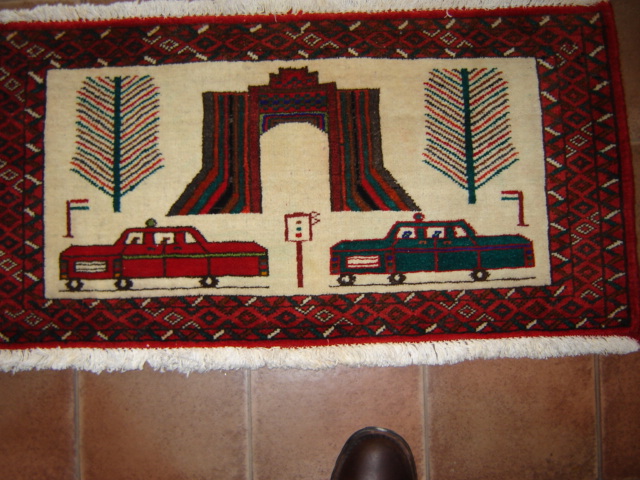
An artist:
defensorfortis


From boingboing

and 


Here’s a puzzler:
Mushwani, 5’1″ x 7’5″, dated 1994. No coherant translation of Farsi text, yet. The wool is super fine, very well knotted. The use of different checkerboard techniques is noteworthy, particularly how the checkerboard coloration is used to create convincing pictorial depth. $1400

This rug is 4’10” x 7’2″, note elaborate kilim end. Note similarity to the fringe of this antique Amman Ullah Khan rug:
Iranian hunting rug featuring bow hunters on horseback.
I have included many photos to show the material and structural differences between rugs from northwest Iran and west Afghanistan.
This rug depicts the founder of Shia Islam, Ali. The writing says, “The Imam Ali, in whom God has given a great gift.” Note that his sword and green head dress.
KABUL, Afghanistan — Raising chickens has always been women’s work in Afghanistan, and in the past several years this backyard occupation has brought new independence and income to thousands of illiterate war widows who have few other ways to earn a living.
So when avian flu was detected here six months ago, and several cases of its virulent H5N1 strain confirmed by U.N. experts in March, ripples of rumor and panic coursed through the loosely organized groups of widows in greater Kabul who raise some of Afghanistan’s estimated 12.1 million chickens and sell their eggs for 2 cents apiece.
Link By Pamela Constable, for Washington Post

Does this look familiar?
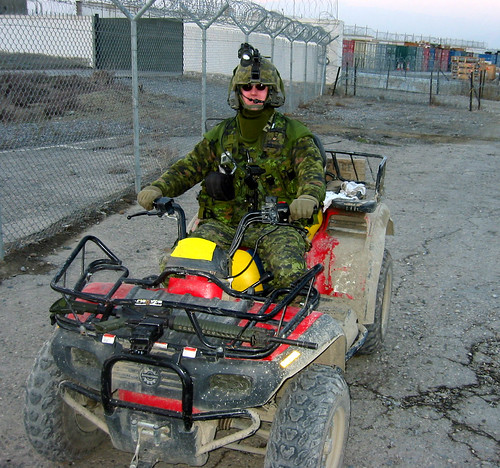
Excellent photos on flickr by TKnoxB
And Pagman Lake Arch:
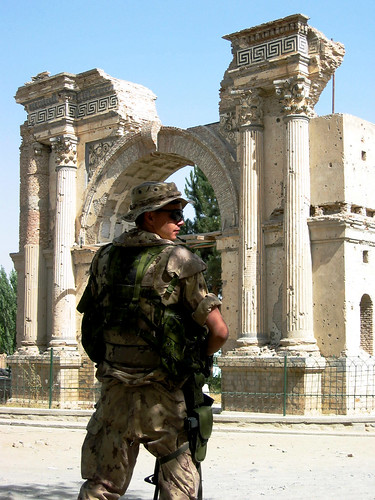

Rugs featuring Pagman Arches.
A friend, and fellow rug collector, sent these interesting rug photos recently.
Rug 1
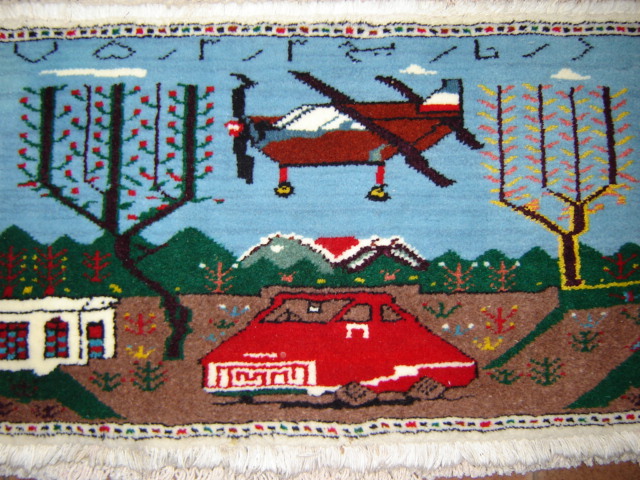
Rug 1 appears to be dated 3/3/57. February 1, 1979 corresponds to the 3rd day of the 3rd month of 1357, which coincidently is the day Khomeini returned from France. Secondly there is the French tri-color on the plane’s tail. The preceding word is hard to read but could be related to childbirth or the making of an epoch. Between the plane and the car appears to be a rising sun, an Iranian national symbol (usually shown in rugs rising over a lion’s back). This rug most likely, commemorates Khomeini’s return to Iran.
Rug 2

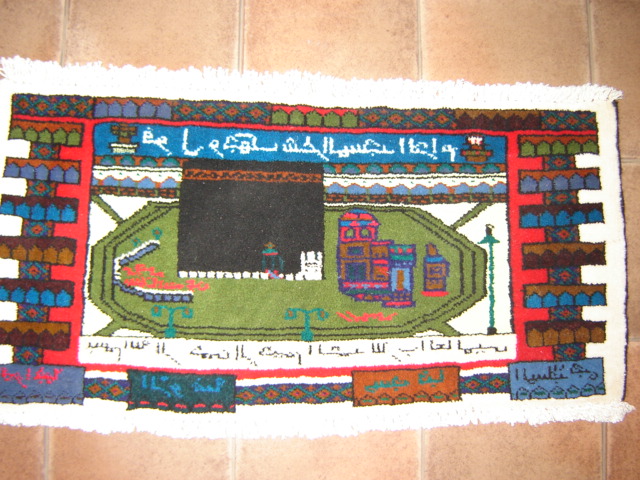
Rug 2 shows the Kabba in Saudi Arabia:

Notice the black rectangle, but also the smaller buildings around the black shroud are seen in both rug and drawing. The green shows the holiness of the site depicted. Also notice the minarets and arches in the top band of the rug. This rug probably commemorates someones hajj, or was woven to sell on the hajj. Iranians, and Afghans, often bring rugs on the hajj to sell to cover the expenses of the trip.
Rug 3
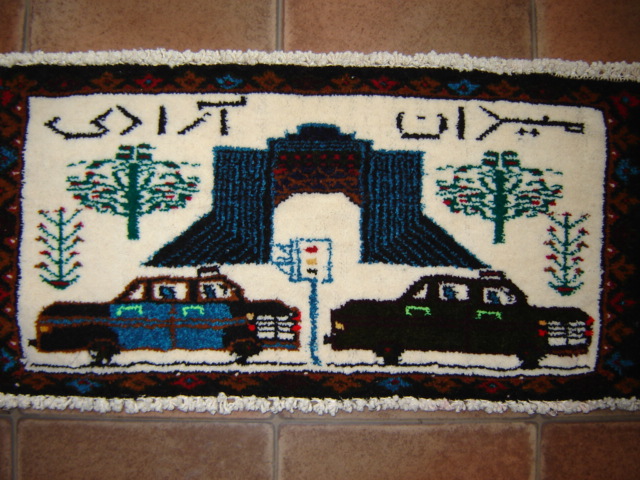
The text on the top of Rug 3, starting from the right, means square or open space, and the second word, azadi, is “freedom”. So one expects this is woven after 1979 when Khomeini changed the name of the arch the Shah built.
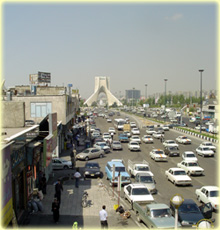
Rug 4
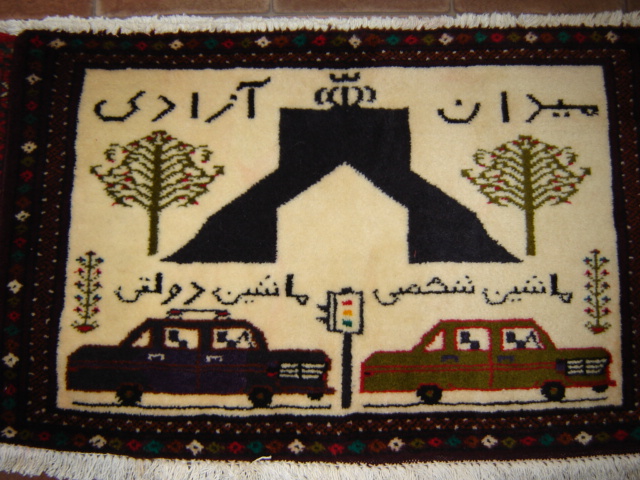
The same text is at top of rug 4. The second line says “maasheen” which surprisingly means motor or car, and the second word seems to be person or individual – the second character is hard to make out. The othere two words, to the left, are again ‘machine’ and probably something like government or state. So, indeed it is the government car following a personal car? It sounds like they could use some freedom in “Freedom Square”.
Rug 5
